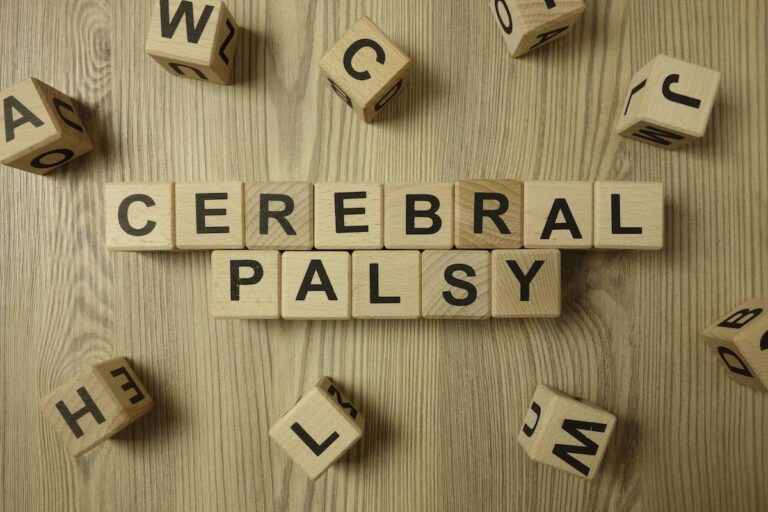
Call 24/7 for a FREE case evaluation
Call now (866) 393-4334

$100,000,000
in California case results
$20,000,000
in California jury verdicts
14
award-winning attorneys in network
Athetoid cerebral palsy is a type of cerebral palsy characterized by athetosis, or uncontrolled movements. This lack of control usually causes a person with athetoid cerebral palsy to make erratic movements, especially when the person is in motion. People with athetoid cerebral palsy experience fluctuations in muscle tone. For people with this condition, their muscles may be too tight or looser than usual.
Athetoid cerebral palsy is also known by another name, dyskinetic cerebral palsy. Some experts believe that athetoid cerebral palsy is instead a type of dyskinetic cerebral palsy, along with coreoathetoid cerebral palsy and dystonic cerebral palsy. Most expert sources, however, do agree that Athetoid cerebral palsy makes up around 10 – 15% of CP diagnoses.
People with athetoid cerebral palsy do not have control over various parts of their body. This lack of control causes them to move their arms, legs, face and other parts of their bodies in unpredictable and unexpected ways.
These uncontrollable movements and other symptoms tend to become more severe in times of emotional stress, and often subside completely during periods of rest and sleep. However, some do still exhibit these uncontrollable movements while resting, although usually to a lesser extent.
Athetoid cerebral palsy results from damage to the basal ganglia or cerebellum occurring during the brain’s development. Damage typically occurs before, during, or shortly after an infant’s birth.
In their paper “Functional Neuroanatomy of the Basal Ganglia,” scholars José L. Lanciego, Natasha Luquin, and José A. Obeso note that the basal ganglia is chiefly responsible for motor control, but this part of the body also impacts motor learning, emotions, and a range of executive functions and behaviors. Meanwhile, the cerebellum influences movement and posture, according to Laurie Lundy-Ekman’s “Neuroscience: Fundamentals for Rehabilitation.”
Unlike people with spastic cerebral palsy, people with athetoid cerebral palsy often have very weak muscles. Parents that are holding or carrying their children with athetoid cerebral palsy may notice they feel quite loose.
Changes in muscle tone can cause the involuntary movements associated with athetoid cerebral palsy. The uncontrollable movements associated with the condition can make learning to sit and walk challenging. Tasks that require coordination can be difficult, such as grasping objects and eating on one’s own.
When athetoid cerebral palsy impacts the face, the uncontrollable movements of the tongue and other facial muscles can impair speech, sucking and swallowing, which can make eating and drinking difficult. These impacts can also cause drooling.
Some people also have learning difficulties while others learn normally. Other common symptoms noted include:
Parents can monitor whether their children are meeting expected developmental milestones. Doctors typically will not diagnose athetoid cerebral palsy until a child has failed several milestones, so many parents identify the problem before health professionals. The general lack of muscle tone, is another sign for parents to watch for in their children.
While athetoid cerebral palsy is permanent and irreversible, treatment options can greatly improve quality of life for people with this condition.
Physical therapy can help people with athetoid cerebral palsy control their movements and improve their posture. Daily physical therapy activities focusing on improving motion can also help atrophied muscles and contractures.
Since treatment is difficult, physical therapists should educate themselves in the best therapeutic techniques. These techniques should be performed together with the use of a brace. Physical therapy is a vital part of any treatment plan.
Occupational therapists focus on improving the fine and gross motor skills of people with athetoid cerebral palsy. These occupational therapy professionals teach their patients how to perform everyday tasks. As treatment continues, occupational therapists focus on broadening their patients’ skill sets.
Speech therapy can help people with athetoid cerebral palsy learn to speak and swallow better. When athetoid cerebral palsy makes verbalizing thoughts difficult for people, speech therapists can help them communicate through special assistive devices, including computers with voice synthesizers.
Medications can also ease the symptoms of athetoid cerebral palsy. For example, antipsychotic drugs, such as fluphenazine and haloperidol, can control involuntary movements by blocking dopamine’s effect on the basal ganglia. Research has noted that, in most forms of chorea, too much dopamine prevents the basal ganglia’s normal function.
Alternative medicines such as massage therapy, yoga, and acupuncture can be great forms of therapy to help ease the symptoms of people with Athetoid Cerebral Palsy.
WE’RE OPEN NOW
Our staff are standing by to help you find the perfect attorney for your case.

Published: 16 May 2022
American Pregnancy Association
Cerebral Palsy Association in Alberta
March of Dimes – Newborn Jaundice
Functional Neuroanatomy of the Basal Ganglia
Neuroscience: Fundamentals for Rehabiliation
Merck Manual – Chorea, Athetosis, and Hemiballismus
Trishla Foundation: Cerebral Palsy – YouTube Channel
Occupational Therapy Specialty Review and Study Guide: A Series from StatPearls